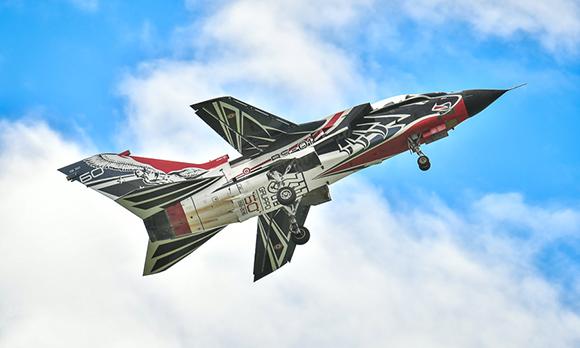A few weeks ago, celebrating the 60 years of the 311 Group of Pratica di Mare (known to all as Experimental Flight Unit), we were able to admire the splendid commemorative livery of the "Tornado" which became the protagonist of the event (photo opening).
To tell the truth, the presentation of the "Tornado" is always one of the most interesting moments of any "airshow" in which "the Experimental" participates and not only for the roar of its engines.
To see him fly in that way, certainly does not prove the years he has and not only in air shows.
To me it literally drives me crazy when it arrives in slow flight "dirty" (as it is said in jargon when it is presented to us in landing configuration, with cart and extended flaps) parallel to the public, which greets with a very difficult "barrel tonneau" except then open up all his driving force to accelerate and "clean up" to start his show.
The same thing happens when he concludes the performance he arrives frontally at a speed that differs from that of the sound for less than a sneeze and shoots himself vertically, "a candle" breaking through the hearts of those present in full post-burner! Simply wonderful!
 Of course, he will not have been waved on the set of certain American propaganda films (he was in part in "Blue Tornado", a film that no one ever went to if it were not for the presence of Patsy Kensit), but to see him fly live and in that way alone justifies the journey to the airshow.
Of course, he will not have been waved on the set of certain American propaganda films (he was in part in "Blue Tornado", a film that no one ever went to if it were not for the presence of Patsy Kensit), but to see him fly live and in that way alone justifies the journey to the airshow.
However, when we talk about a military vehicle we need to put our heart aside for a moment and turn on our brains.
In war missions, the "Tornado" has proven to be an effective and respectable weapon system today.
Of course, to obtain this level of effectiveness it always requires huge economic resources and so many years from its project it also requires a very high commitment at any level to remain on a par with more recent aircraft.
Drivers and navigators must receive extremely articulated specific training, because it is an aircraft capable of performing multiple roles, all of the first line and always with respectable performances.
Maintenance specialists must deal with complex interventions on sophisticated systems and unimaginable stress subjects.
Taxpayers (even if they don't know it because allotment commentators are a more recent invention than when the Tornado it was news as news) they really pay huge sums to train every single professional who works, at any level, on the "Tornado".
So we all have our "work to do" to allow what our eyes see in airshows and even more for what the newscasts don't tell.
Yes, because the newscasts have given more news of the sad accident in Ascoli (news of this kind make for a lot of "audience", and in this case even more for a whole series of reasons), while very little have said and they say of excellence professional at every level required for the "Tornado" to exist and still constitute a robust component of our air defense. Perhaps the main one, for some roles, and which is indispensable for a Western country and belonging to an international alliance that is always very exposed.
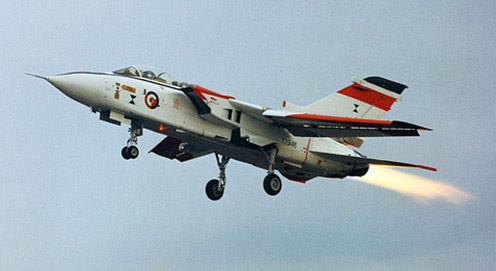
Many know that the Panavia PA-200 "Tornado" is the result of a joint development of the United Kingdom, Germany (indeed, West Germany, since at that time Germany was not united) and Italy.
Together with them, which were equipped in the various versions IDS, ADV and ECR, it was also purchased by Saudi Arabia.
Italy played a very important role in its development, both for the Turbo Union RB-199 engine, and for the design of the device for the rotation of the variable geometry wing and other important elements. Precisely these two technical details alone represent a "diamond point" for technological excellence effort and are distinguished from any other detail, except for the Terrain Following Radar that allowed to fly following the profile of the ground to 30m from the ground to make itself less visible to the radar and to the enemy antiaircraft. Even at supersonic speed.
In fact, the variable geometry of the wing (manually controlled on the IDS version and become automatic on the HDV) for the first time included sub-wing pylons capable of maintaining parallelism with the fuselage despite the variation of the wing “arrow” angle. It was the first time that such a solution could be achieved, a truly complex and crucial engineering challenge that makes the difference, because it allows the transport of a considerable operational load, superior to any other aircraft with a variable geometry wing contemporary to the "Tornado" .
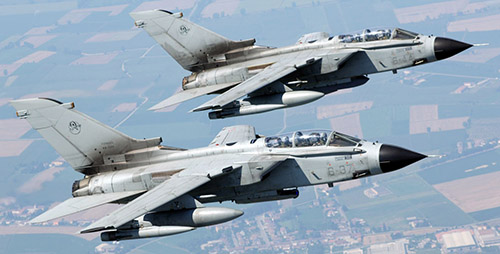 In general, however, that wing did really well, and is full of elite solutions, like the flaps fowler double slit, the slats on the movable half-wings and the flaps on the leading edge of the fixed root.
In general, however, that wing did really well, and is full of elite solutions, like the flaps fowler double slit, the slats on the movable half-wings and the flaps on the leading edge of the fixed root.
An almost unique feature of the engine, on the other hand, is the presence of thrust reversers, certainly more effective than braking parachutes on a machine over 25 tons and capable of allowing a faster re-landing after landing and brakes on wheels that are less heavy and stressed .
They are technical solutions already present on the F111, but the smaller dimensions of the Tornado they make it an infinitely more agile and maneuverable aircraft and that by virtue of this it proves more effective while allowing similar uses.
The cart was also particularly robust, because in the initial specifications it was also assumed that it would be used (never experienced) on aircraft carriers.
All these solutions required a lot of experimentation, and even today, at 41 exactly years after the first experimental flight, the Experimental's testers prove their effectiveness, always making us excite, without making us think about it, we can't see but can still do it in the "operating theater" ...
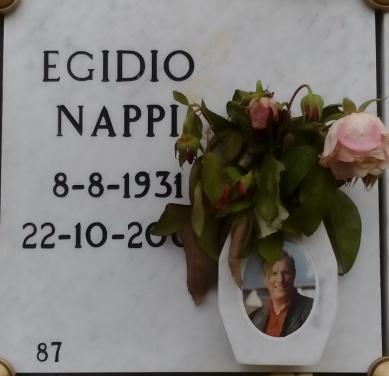
41 exactly years, I said ... Yes, because exactly the 5 December of the 1975, the test pilot Egidio Nappi carried the first Italian prototype in flight taking off from Turin Caselle airport, where it was manufactured.
Here the images of that historical event. A historical event for Military Aeronautics, but also historical for industry and national technological research and to which we really owe a lot.
Too bad that the first example, with a livery in my opinion even more beautiful than the commemorative one we mentioned, is no longer visible in Vigna di Valle, where it "rested" in the main hangar, and where I often saw a good quarter of century ago ...!
I often think about it, and because becoming a “Tornado” driver would have been my dream of a boy, and because every week, when I go to the rose garden of the monumental cemetery of Turin, I see his tester of that first flight of 41 years ago, which rests randomly close to my loved ones, and I always think that a choice was never more adequate than remembering Him with a picture of those times, smiling and in an orange flight suit, the only monument appreciated by Men of such stature and modesty.
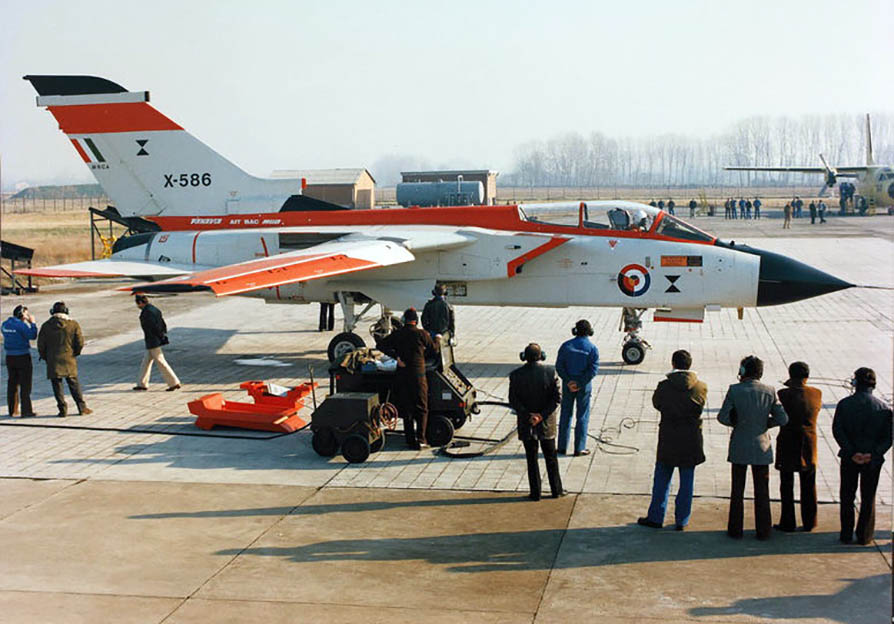
(photo: author / Aeronautica Militare / web)

